Introduction
The goal of this publication is to provide water-resource professionals and interested citizens information about a framework that can be used to describe the value of various goods and services provided by water resources. This article focuses on two questions: (1) How can the value of water resources be estimated in dollar terms? and (2) why might it be essential to have such a dollar value estimate to make policy decisions? This article introduces a series of EDIS publications describing specific economic studies focusing on Florida's water resources.
Warren Buffet, an investing legend and philanthropist, once said that "price is what you pay, value is what you get." In keeping with this philosophy, to estimate the value of water resources, one needs to think about what we get from water resources. Sightseeing for the day, camping for a week in a state park, or tubing or kayaking down a river are all examples of how we benefit from water resources. However, water resources provide us with much more than that. As discussed below, all goods and services that people get from nature (referred to as "ecosystem services") are grouped into four categories, and these services can then be evaluated economically based on their use by people using a variety of methods. This article also provides examples of decisions that may need such economic value estimates.
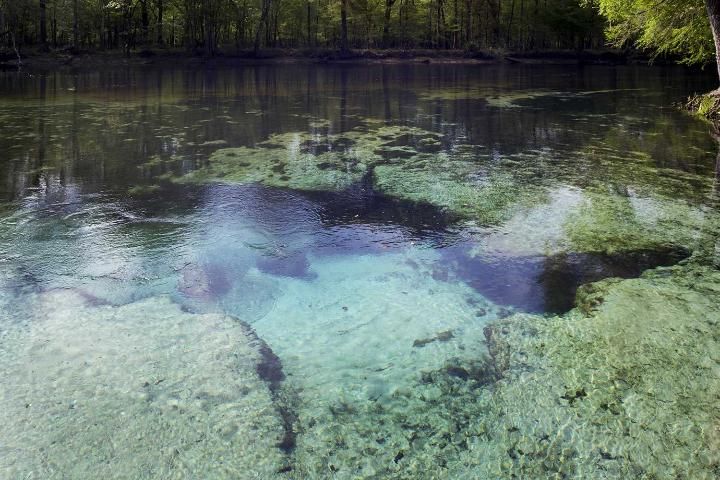
Credit: UF/IFAS
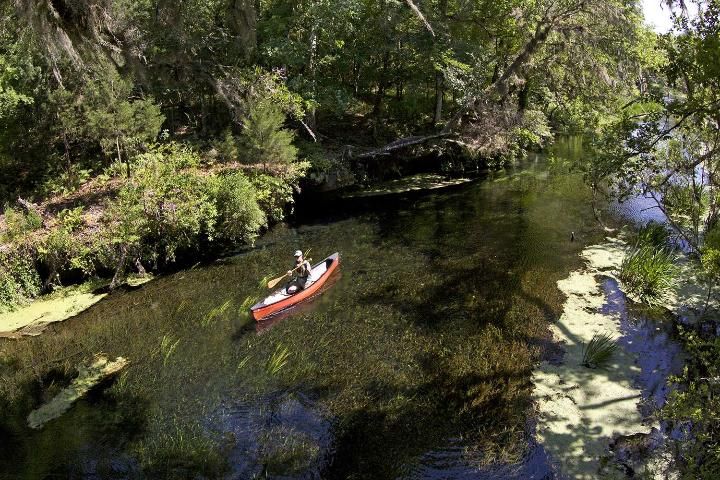
Credit: UF/IFAS
Ecosystem Services Provided by Water Resources
The benefits we derive from nature depend on processes in ecosystems, or communities of living things—plants, insects, fungi, birds, mammals, and other organisms—that live together, cooperate, and rely on one another and the environment for their survival. An example of an ecosystem is a coral reef (Figure 3) that includes various species of corals (Florida Keys National Marine Sanctuary protects more than 50 species of coral) and a variety of organisms living on the reef, such as various fish that can hide and find food on the reef. Along with coral reefs, other types of ecosystems related to water resources can be found in rivers, lakes, groundwater, wetlands and marshes, coastal waters, and oceans.
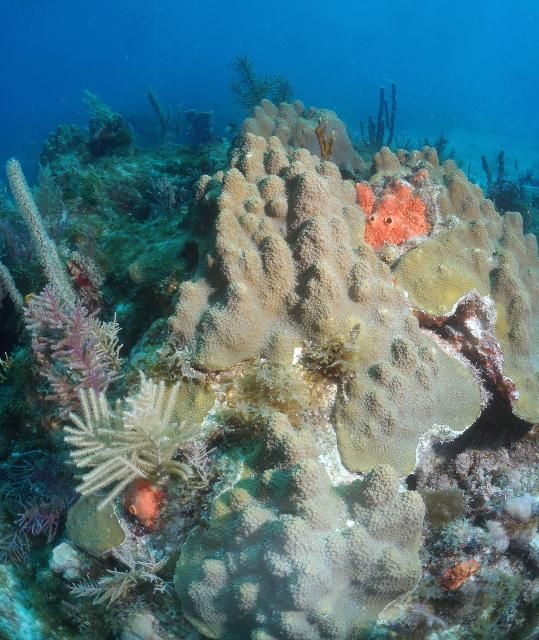
Credit: National Ocean Service
Nature provides us with a variety of goods, services, and experiences that we value and on which we depend. Food on our tables, clean water, enjoyable pass times at a lakeside, or the excitement and the sense of discovery from observing a rare bird or animal are just a few examples of the ways people interact with nature and benefit from it. The term "ecosystem services" (sometimes also referred to as "environmental services") is used to describe all the goods, services, and benefits that we derive from nature. All ecosystem services have been grouped into the following four categories (MEA 2005), as explained by Figure 4:
-
Provisioning services: materials and energy from ecosystems
-
Regulating services: the services that ecosystems provide by acting as regulators
-
Cultural services: the services that shape the culture, such as recreation, tourism, education, and spiritual and aesthetic appreciation
-
Supporting services: the processes in ecosystems that may not directly benefit people but are necessary for sustaining all other ecosystem services
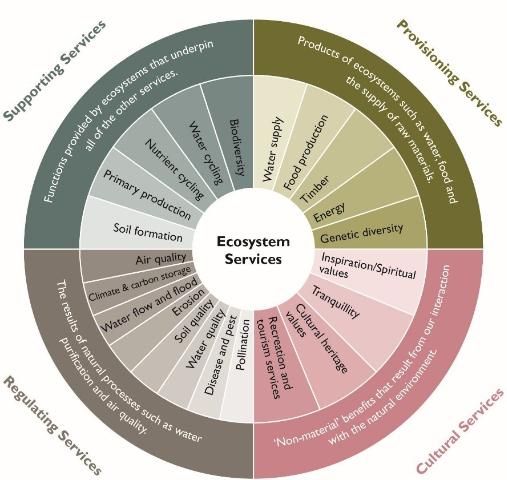
Credit: SDNPA
For water resources specifically, the four types of ecosystem services include the following:
-
Provisioning services: aquatic ecosystems provide goods and services, such as:
-
Fish (through fisheries and aquaculture)
-
Water for drinking and non-drinking purposes (e.g., water for cooling processes in power plants)
-
other materials humans use (e.g., for medicine or energy production)
-
Regulating services: aquatic ecosystems regulate
-
Water quality (through water purification)
-
The size of the populations of plants, animals, and other living things (including pests and diseases)
-
Soil formation, composition, and erosion
-
Air quality and climate (through such processes as carbon sequestration)
-
Floods (e.g., mangroves protecting coastal areas from high waves during hurricanes)
-
Cultural services: aquatic ecosystems provide cultural services, such as:
-
Recreation (e.g., swimming, canoeing, or motor-boating)
-
Intellectual and aesthetic appreciation (e.g., educational programs around water resources, or incredible photography)
-
Spiritual and symbolic appreciation (e.g., water used for baptisms or water being perceived as sacred in Native American culture).
-
Supporting services: there is a variety of other processes in aquatic ecosystems that may not directly benefit people but are necessary for sustaining all other ecosystem services (such as nutrient cycling) (Grizzetti et al. 2016).
The Importance of Estimating the Dollar Value of Water Resources and Ecosystem Services
Human activities can impact water resources and aquatic ecosystems, and, as a result, change the flow of ecosystem services and the benefits we receive from nature. For example, fertilizers used on urban landscapes and agricultural fields can end up in local streams or groundwater, changing the concentrations of nitrogen and phosphorus in water and affecting aquatic ecosystems. Withdrawals of large volumes of groundwater to supply the public with tap water can impact the flow of a nearby spring. Placing a dam to create an artificial lake for recreational purposes can complicate fish migration. Releasing non-native plants or other living organisms into the wild can threaten the native wildlife. An example is Burmese pythons, reptiles that can exceed 20 feet and threaten human safety and wildlife, which were brought to Florida as pets, then escaped to nature and now call south Florida home (FWC 2019). There are many more examples of how human activities affect water resources, change aquatic ecosystems, and thereby alter the flow of ecosystem services provided by them.
Protecting or restoring water resources requires significant investments. For example, restoring, protecting, and preserving the Greater Everglades ecosystem in south Florida while also providing for other water-related needs of the region is estimated to cost $10.5 billion (Everglades National Park 2015). The plan will increase freshwater storage and distribute this freshwater to support ecosystems and for urban and agricultural purposes, while also reducing floodwater damage to coastal estuaries (Everglades National Park 2015). Other projects to protect and restore the environment can be very costly, too. The assessment of the monetary value of ecosystem services, examples of the significant benefits that healthy ecosystems provide to society, can help justify such investment decisions. It is also important to note, however, that the economic value of ecosystem services should not be the sole criterion for making decisions.
In addition to economic (monetary) values, one should recognize sociocultural and ecological values provided by nature. Also, it is complex to measure comprehensively the economic value provided by water resources. As a result, economic value is often used for illustration and to raise awareness of the importance of water resource protection and restoration. Such estimates can also inform policy priorities and assist in selecting a policy with the with the highest payoff per dollar invested (Grizzetti 2016, Kreye et al. 2016).
Valuing Ecosystem Services in Dollar Terms
Economic value is based on people's assessment of the "utility" or "worth" of goods and services. (Recall Warren Buffet's quote: "price is what you pay, value is what you get.") For the types of ecosystem services discussed above (i.e., provisioning, regulating, cultural, and supporting), economists grouped the components of the total economic value into the following categories: use value, option value, and non-use value:
-
Use values measure the worth of direct or indirect uses of the ecosystems by people. For example, for Florida springs, swimming, snorkeling, and observing manatees (i.e., cultural services) as well as bottling spring water for drinking purposes (i.e., provisioning services) are direct uses.
-
Option value reflects the willingness to preserve an option to use the ecosystem service in the future. For example, a spring in a remote location that is not accessible for recreation today can provide for future recreation opportunities when better roads are built in that area.
-
Non-use value is the value people assign for preserving or improving a resource that they will never use. For example, non-use value can be linked with "existence value" (the value derived from merely knowing that Florida has more springs with plentiful flow than any other state in the nation) or "bequest value" (the value we place on knowing that our kids and grandkids can enjoy and use the springs even though we do not use them).
Total economic value (TEV) is, therefore, the sum of these three main components: TEV = USE VALUE + OPTION VALUE + NON-USE VALUE (Figure 5). Given these components, the benefits from ecosystems can be much more significant than just the revenue collected from entrance fees, and very often these benefits can be higher than the cost of restoring or preserving ecosystems (Tientenberg 2006).
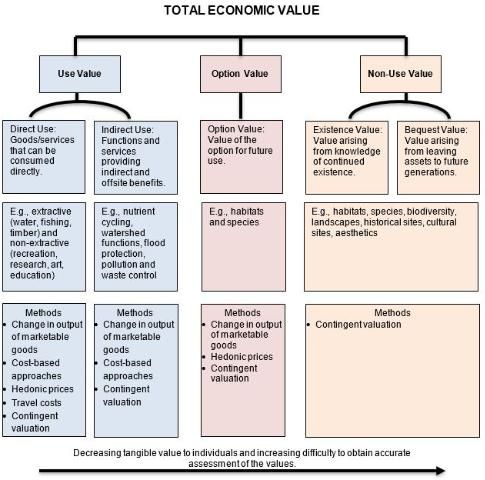
Selected provisioning ecosystem services are traded on the market, and therefore they have prices. Examples are fisheries (with prices for the fish catch), water for drinking and non-drinking purposes (with prices for water provided to residential, commercial, industrial, and institutional uses supplied by the public supply systems), and supply of other materials (e.g., prices for algae used as fertilizer). Note that the prices paid for these goods are generally not equal to the value; however, the prices serve as useful indicators that can be used to calculate the value. For example, the price for tap water is usually low, and people value water for drinking, household tasks, and landscape irrigation much more than the price they pay. While the value is not observed, economists can estimate the value by observing how the variations in prices (over time and space) influences the quantities of goods and services purchased. The term "consumer surplus" is used to describe the value that people derive from the ecosystem service above the price they pay. The value of ecosystem services can also be received by the producers (referred to as "producer surplus"). For example, the market price for the fresh catch can be significantly higher than the costs of fishing. In this case, the value, or the difference between market price and producers' expenses, is received by the producers. The total value is the sum of producer and consumer surpluses.
However, for most of the ecosystem services, there is no market, and therefore, market prices cannot be used to measure their values. As a result, economists have developed special methods to assign dollar values to different types of ecosystem services, including:
-
The total economic contributions method is primarily used to examine the importance of tourism related to a recreational site (i.e., the use value of cultural ecosystem services). For a recreational site (such as a lake or a spring), this method analyzes spending by the visitors and relates the expenditure to the flow of goods and services in the local economy. This flow of goods and services determines industry production, employment, taxes, and other indicators of regional economic activity (Mulkey and Hodges 2012).
-
The travel cost method also focuses on tourism and recreation (i.e., use values and cultural ecosystem services). This method is often used together with the total economic contributions method because it complements information about the economic activities related to the recreation. The travel cost method is based on the assumption that the time and costs incurred by users traveling to a recreational site represent the price that people are willing to pay for the recreational experience. In this case, this "price" can be related to the number of trips. If such information about various price-quantity pairs is available, economists can evaluate the total value of visitors' recreation experience (i.e., consumer surplus) (see more in Pienaar 2017).
-
The contingent valuation method can be used to measure the use and non-use values of various ecosystem services. The technique relies on surveys asking people to make tradeoffs between consumption of various goods and services (including ecosystem services). For example, such studies can ask how much people would be willing to pay in their monthly water bills if the payments are used for springs water quality improvements, ultimately resulting in enhanced recreational opportunities. In this case, respondents would need to compare paying higher water bills to achieve springs water quality improvements versus having smaller water bills allowing for additional spending for other household needs.
-
The hedonic valuation method involves analyzing property sales prices to infer the value of property amenities, including proximity to a lake or river of good quality.
-
The production function method is based on the idea that water resources provide an "input" to economic activities, and "like any other input, their value can be equated with its impact on the productivity of any marketed output" (NAP 2005). For example, the value of irrigation water for agriculture can be determined by comparing yields and profits from irrigated and non-irrigated fields.
-
The replacement cost method is based on the idea that if people incur costs to replace the services of ecosystems, then those services must be worth at least what people paid to replace them. For example, water purification services provided by a wetland can be compared with the cost needed to achieve the same quality of water using industrial processes.
-
The benefits transfer method applies previously estimated ecosystem service values to another location or context, adjusting for income levels, inflation, and other differences among the study sites.
Additional information about the valuation methods for ecosystem services can be found on the Ecosystem Valuation website at http://www.ecosystemvaluation.org/1-03.htm and in Letson (2002).
Summary
This article introduces interested readers to the concept of ecosystem services—various types of goods and services that nature provides to humans. The article also gives examples of applications of this concept to water resources. Finally, the article discusses the fact that assigning economic values to these ecosystem services can help demonstrate the importance of nature and the services it provides, and it can help us to make more informed decisions regarding managing the environment. Other articles in this series provide specific examples of the value of ecosystem services provided by Florida water resources.
Reference List
Boateng, I. (ed.) 2010. Spatial Planning in Coastal Regions: Facing the Impact of Climate Change. FIG Publication 55. FIG Commission 8 Working Group 8.4, International Federation of Surveyors (FIG), Copenhagen, Denmark.
Everglades National Park National Park Service. 2015. Comprehensive Everglades Restoration Plan (CERP). Everglades National Park, National Park Service. https://www.nps.gov/ever/learn/nature/cerp.htm
Florida Fish and Wildlife Conservation Commission (FWC). 2019. Invasive Burmese Python. Florida Fish and Wildlife Conservation Commission, Tallahassee, FL. https://myfwc.com/wildlifehabitats/profiles/reptiles/snakes/burmese-python/
Grizzetti, B., D. Lanzanova, C. Liquete, A. Reynaud, and A. C. Cardoso. 2016. Assessing water ecosystem services for water resource management. Environmental Science & Policy 61 194–203
Letson, D. 2002. "Principles of economic valuation." In: Florida Coastal Environmental Resources: A Guide to Economic Valuation and Impact Analysis, edited by D. Letson and J. W. Milon. Gainesville, FL: Florida Sea Grant College Program.
Millennium Ecosystem Assessment (MEA) Board. 2005. Ecosystems and human well-being: Synthesis. https://www.millenniumassessment.org/documents/document.356.aspx.pdf
Mulkey, D. and A. W. Hodges. 2012. Using Implan to assess local economic impacts. FE168. Gainesville: University of Florida Institute of Food and Agricultural Sciences.
National Ocean Service. n.d. Florida Keys National Marine Sanctuary. https://floridakeys.noaa.gov/corals/biodiversity.html and https://floridakeys.noaa.gov/whatsnew/around/2012/protectingcorals.html
National Research Council. 2005. Valuing Ecosystem Services: Toward Better Environmental Decision-Making. Washington, DC: The National Academies Press.
Pienaar, E. 2017. Valuing the Recreation Uses of Natural Resources: The Travel Cost Method. WEC341. Gainesville: University of Florida Institute of Food and Agricultural Sciences. https://edis.ifas.ufl.edu/uw386
Kreye, M. E. Pienaar, R. K. Boughton, and L. Wiggins. 2016. Using the Ecosystem Services Approach to Advance Conservation Efforts on Private Lands. WEC369. Gainesville: University of Florida Institute of Food and Agricultural Sciences. https://edis.ifas.ufl.edu/uw414
Letson, D. 2002. "Principles of economic valuation." In: Florida Coastal Environmental Resources: A Guide to Economic Valuation and Impact Analysis, edited by D. Letson and J. W. Milon. Gainesville, FL: Florida Sea Grant College Program.
Scottish Government. 2004. An Economic Assessment of the Costs and Benefits of Natura 2000 Sites in Scotland. Final Report, Scottish Executive 2004, Environment Group Research Report 2004/05.
Tietenberg, T. 2006. Environmental and natural resource economics 7th Ed. Pearson Education Inc., Boston, MA.